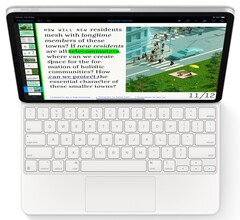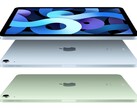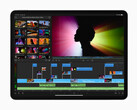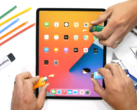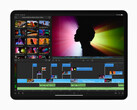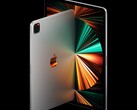Ahead of WWDC, like most iPad Pro fans, I was hoping for bigger and better things than what Apple revealed. I had ordered an iPad Pro 12.9-inch M1 model with 16 GB of RAM and 1 TB of storage. I didn’t really need that much storage, but that is where the 16 GB of RAM tier kicks in. With the M1 chip and that much RAM and storage available, I (along with many others) thought that Apple had big plans for iPadOS 15. At the very least, I thought that we could expect to see Mac app support as it would help fully leverage the incredible horsepower Apple had packed into its new iPad Pro models.
However, as we now know, Apple didn’t reveal anything in iPadOS 15 that comes remotely close to leveraging an M1-powered iPad Pro with 16 GB of RAM. As such, I cancelled my loaded 12.9-inch M1 iPad Pro for the base model with 8 GB of RAM and 128 GB of storage. Had Apple even released a single proper pro iPad app for the masses (no, the upgraded Swift Playgrounds doesn’t count), I would have been keen to stick with the higher end iPad Pro model. But not only did Apple fail to lead by example as a software developer, it also didn’t make any effort to lift the RAM utilization of apps like Garageband or iMovie. Is there any wonder Apple’s CEO wants staff back in the office at least three days a week from September?
In the lead up to WWDC 2021, nearly every review of the iPad Pro highlighted the shortcomings of its software and commented on how its hardware outstripped it. This has been the case since the iPad Pro with A12X SoC was released in 2018. Remember, the A12Z chip (a minor GPU upgrade over the A12X) that featured in the 2020 iPad Pro revamp was used to power Apple’s Mac mini-based Developer Transition Kit (DTK). What is significant about this? The DTK ran full macOS X for Arm (albeit paired with 16 GB of RAM). Many developers commented on how capable the DTK was. Yet, here we are three years later with the sequel to the A12X/A12Z in the form of the M1 (an A14X at heart) with pro apps developed for the iPad able to be counted on one hand.
The launch of the first Apple silicon Macs was great to behold as it finally saw Apple fully tap into the power of its mobile silicon. While the iPhone makes some use of it, and the iPad arguably somewhat more, it is only in the Mac that Apple’s silicon has been fully utilized. Of course, this does not necessarily need to be the case. The new iPad Pro models in particular could easily run Mac apps if Apple allowed it -- after all, the underlying architecture between its new M1 Macs and iPad Pro models is completely identical. As I have previously argued, Apple should allow Mac apps on iPad Pro because expecting developers to fully tap into its hardware is effectively a lost cause. Not many developers will sink the money, time and energy into developing a pro iPad app when the same time and effort would yield a macOS app with a much larger audience.
The fact of the matter is that iPadOS is the poor cousin of iOS and macOS (and even watchOS). This was clear to see with some key upgrades that Apple made to iPadOS merely playing catch up to iOS 14 and the others mere refinements of its existing UI. While the iPad Pro is a much more effective tool than it has been in the past and its form factor remains pivotal to its appeal, Apple has dragged its feet on making the iPad everything that it could. After initially launching the iPad with a keyboard before quickly axing it, it was years before Apple introduced its Smart Keyboard with third-party firms only too happy to fill the gap. Users did not want to just use it as a tablet - they wanted to use it as a laptop. Then it was years more before Apple finally introduced the Magic Keyboard with built-in trackpad and added cursor support. How long will it be before Apple makes the iPad everything that it could be, which is something not just as good as a MacBook but even potentially better?
Source(s)
Own


